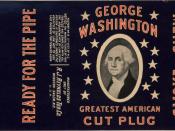Abstract
In this paper we touch on the economic issues of the 1997 Tobacco Resolution and the proposed legislation that was used to settle tobacco litigation in the United States. With settling the lawsuit in return for tax increases, the Resolution was a great example of a "win-win" deal. The taxes would cost the companies about $1 billion per year, but the government about $13 billion per year, and allow the lawyers involved to claim fees based on hundreds of billions in "damages". We found that alternative taxes would be considerably greater to those proposed. Contrary to conventional wisdom, youth smokers are especially valuable to the companies, so marketing restrictions are a sensible part of any deal. The individual state settlements set very dangerous examples which could open up unprecedented opportunities for collusion throughout the economy, and the multi state settlement of November 1998 is equally flawed. The fees proposed for the lawyers (around $15 billion) and the equally astonishing proposed payoff for Liggett (perhaps $400 million annually, for a company with a prior market value of about $100 million) also set terrible examples.
We finish up with some our views about how public policy will do better.
ABSTRACT 2
INTRODUCTION 4
THE DEAL 4
THE RESOLUTIONS 5
THE FOOD AND DRUG ADMINISTRATION 5
THE TEAMS OPINION 6
CONCLUSION 6
REFERENCES 7
APPENDIX A 8
Introduction
In this paper we will be discussing a case on The Tobacco Deal that was conceived in 1997. The major players in this case were the top five largest tobacco manufacturers (Brown & Williamson Tobacco Corporation, Lorillard Tobacco Company, Philip Morris Incorporated, R.J. Reynolds Tobacco Company, Commonwealth Tobacco, and Liggett & Myers). Along with the public health organization and Attorneys representing the states.
The Deal
Overall the deal was brought against the tobacco...



Really good
reading this and i must say this essay is really good.. good info and very well writen.. got to give you props on this essay
1 out of 1 people found this comment useful.